I would like my QGraphicsWidget to scale its size based on the size of the scene. The QGraphicsWidget I have currently is a fixed size depending on the return value of sizeHint (QGraphicsWidget is always 200 x 200). Attached below is minimal example:
MainWindow.h:
#ifndef MAINWINDOW_H
#define MAINWINDOW_H
#include <QMainWindow>
#include <QGraphicsScene>
#include <QGraphicsView>
#include "RectangleWidget.h"
namespace Ui {
class MainWindow;
}
class MainWindow : public QMainWindow
{
Q_OBJECT
public:
explicit MainWindow(QWidget *parent = nullptr);
~MainWindow();
private:
Ui::MainWindow *ui;
QGraphicsScene * m_scene;
QGraphicsView * m_view;
RectangleWidget * m_rectangleWidget;
};
#endif // MAINWINDOW_H
MainWindow.cpp:
#include "mainwindow.h"
#include "ui_mainwindow.h"
MainWindow::MainWindow(QWidget *parent) :
QMainWindow(parent),
ui(new Ui::MainWindow)
{
ui->setupUi(this);
m_scene = new QGraphicsScene(this);
m_view = new QGraphicsView(m_scene, this);
m_view->setAlignment(Qt::AlignLeft | Qt::AlignTop);
m_rectangleWidget = new RectangleWidget();
m_scene->addItem(m_rectangleWidget);
setCentralWidget(m_view);
}
MainWindow::~MainWindow()
{
delete ui;
}
RectangleWidget.h:
#ifndef RECTANGLEWIDGET_H
#define RECTANGLEWIDGET_H
#include <QGraphicsLinearLayout>
#include <QGraphicsWidget>
class RectangleWidget: public QGraphicsWidget
{
public:
RectangleWidget(QGraphicsWidget* parent = nullptr);
QRectF boundingRect() const override;
void paint(QPainter *painter, const QStyleOptionGraphicsItem *option, QWidget *widget = nullptr) override;
void setGeometry(const QRectF &geom) override;
QSizeF sizeHint(Qt::SizeHint which, const QSizeF &constraint = QSizeF()) const override;
};
#endif // RECTANGLEWIDGET_H
RectangleWidget.cpp:
#include "rectanglewidget.h"
#include <QPainter>
RectangleWidget::RectangleWidget(QGraphicsWidget* parent)
{
}
void RectangleWidget::paint(QPainter *painter,
const QStyleOptionGraphicsItem *option, QWidget *widget /*= 0*/)
{
Q_UNUSED(widget);
Q_UNUSED(option);
//Draw border
painter->drawRoundedRect(boundingRect(), 0.0, 0.0);
}
QRectF RectangleWidget::boundingRect() const
{
return QRectF(QPointF(0,0), geometry().size());
}
void RectangleWidget::setGeometry(const QRectF &geom)
{
prepareGeometryChange();
QGraphicsLayoutItem::setGeometry(geom);
setPos(geom.topLeft());
}
QSizeF RectangleWidget::sizeHint(Qt::SizeHint which, const QSizeF &constraint) const
{
switch (which) {
case Qt::MinimumSize:
return QSizeF(200, 200);
default:
break;
}
return constraint;
}
Any help on this would be appreciated.

